Introduction of the Ganga River
The Ganga River, lovingly called Mother Ganga, begins at the Gangotri Glacier in the Himalayas and flows more than 2,500 km before reaching the Bay of Bengal. She supports millions by providing water for agriculture, drinking, and daily life. For Hindus, the Ganga represents purity, faith, and eternal hope. From Haridwar to Varanasi, devotees perform rituals along the sacred waters of the Ganga. They also celebrate many festivals on their ghats. These traditions make the river a living bridge between spirituality and survival. The story of the Ganga is not just about a river. It is about culture, devotion, and the essence of life in India.
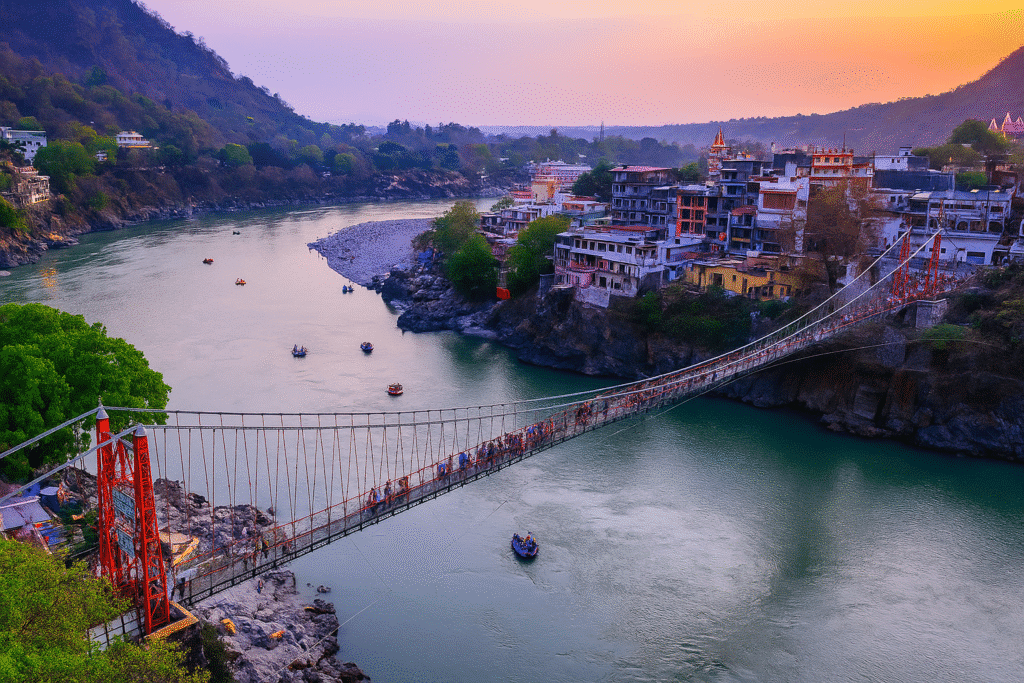
“The Ganga is not only a river, she is a living stream of devotion, culture, and life itself.”
Origin of the Ganga
According to Hindu mythology, the sacred Ganga descended from heaven to earth through the efforts of King Bhagirath. To soften her powerful flow, Lord Shiva captured the mighty river in his matted hair (jata) and gently released her onto the land, blessing the earth with purity and life. Scientifically, however, the Ganga originates from the Gangotri Glacier in Uttarakhand, at Gaumukh, situated at an altitude of over 4,000 meters in the Himalayas. From here, she begins her long journey across the plains of North India. Several important tributaries, such as the Yamuna, Ghaghara, Gandak, Son, and Kosi, join the Ganga along her journey, enriching her waters and expanding her reach to make the river system one of the largest in the world.”
“Born from the heights of the Himalayas and the depths of devotion, the Ganga flows as both legend and life.”
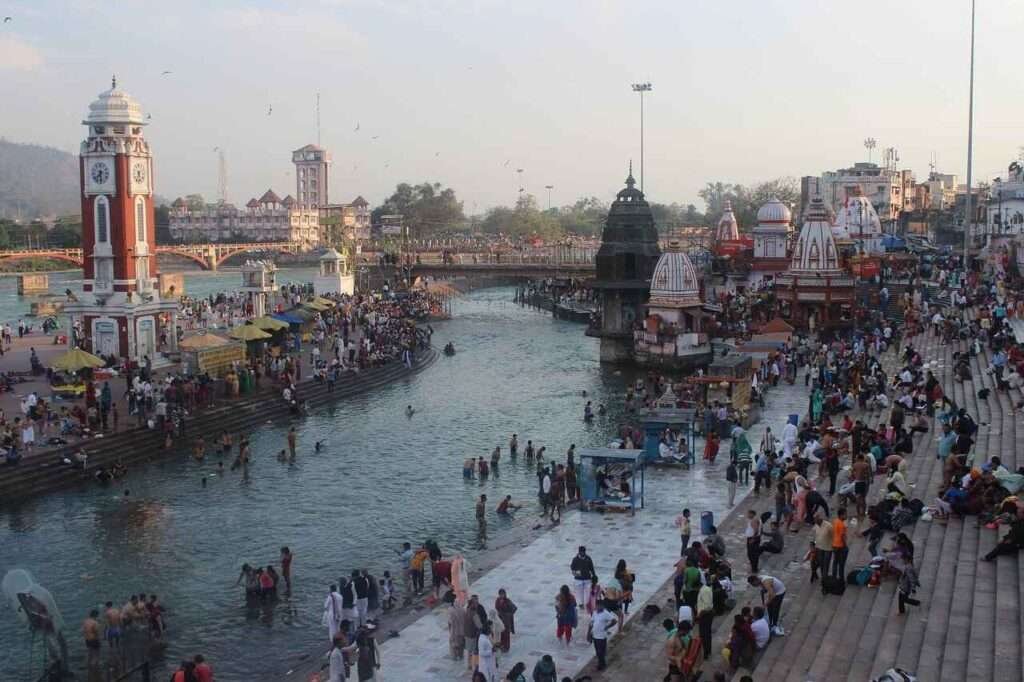
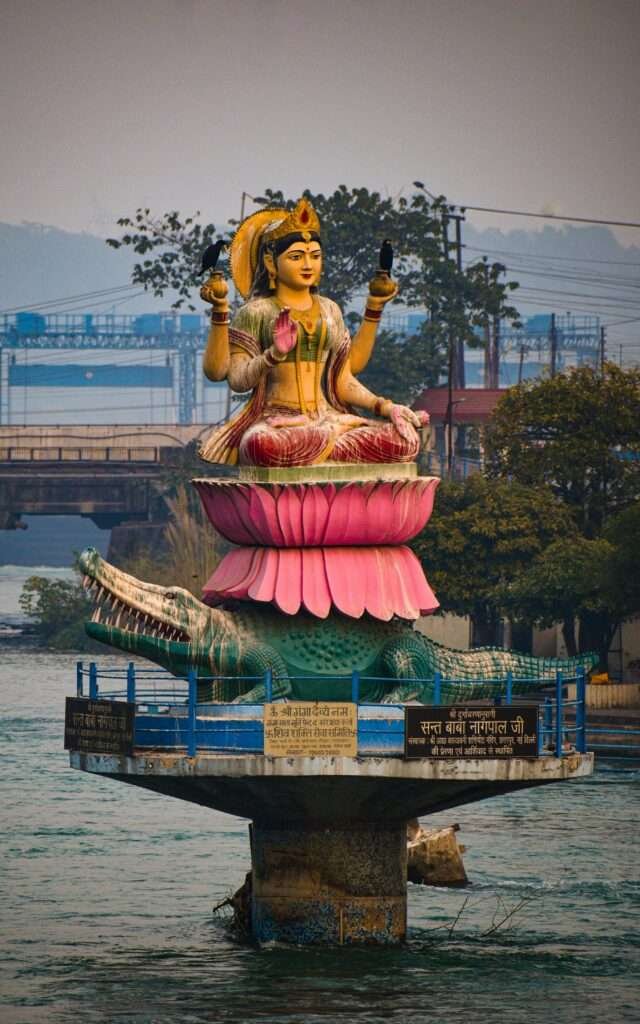
Journey of the Ganga River
The Ganga begins her journey from the Gangotri Glacier in Uttarakhand and travels over 2,500 kilometres before meeting the Bay of Bengal. The Ganga River flows across the northern plains of India. She passes through Uttarakhand, Uttar Pradesh, Bihar, Jharkhand, and West Bengal. On her journey, the river touches sacred and historic cities like Haridwar, Varanasi, Patna, and Kolkata. Each of these cities holds deep cultural and spiritual importance. Along her banks stand famous ghats such as Har Ki Pauri in Haridwar, Dashashwamedh Ghat in Varanasi, Gandhi Ghat in Patna, and Babughat in Kolkata. These ghats are not just places for bathing or rituals but also living stories of faith, festivals, and centuries-old traditions. The Ganga’s geographical journey makes her not only a river of devotion but also the heart of India’s civilisation.
“From the icy Himalayas to the vast Bay of Bengal, the Ganga flows as a timeless witness to India’s journey.”
Cultural and Religious Significance of the Ganga River
For millions of Indians, the Ganga River is not just a river but a divine mother—Maa Ganga—who nourishes life and washes away sins. In the story of the Ganga River, she appears as both a lifeline and a pathway to salvation. People believe that bathing in her holy waters purifies the mind and soul, while even a few drops of Ganga Jal used in rituals or last rites can grant moksha (salvation).
One of the grandest celebrations of the river’s sacredness is the Kumbh Mela. It takes place every twelve years in Prayagraj, Haridwar, Ujjain, and Nashik. Millions of devotees gather here to take a holy dip. The Ganga Aarti is another mesmerising ritual. It happens every evening in Haridwar, Rishikesh, and Varanasi. Thousands of people watch the river glow as countless diyas (lamps) float on the water. The Kanwar Yatra is also a major religious event. In this festival, devotees known as Kanwariyas collect Ganga water from Haridwar and nearby ghats. They carry it to Lord Shiva temples during the holy month of Shravan.
Beyond these grand festivals, daily rituals also revolve around the river. At sunrise, devotees offer water, flowers, and prayers to the Ganga. During marriages, housewarmings, and festivals like Diwali, Ganga Jal is sprinkled as a purifier. Even at the end of life, people wish for their ashes to be immersed in her waters, believing it brings eternal peace.
Thus, the Ganga is not just a waterway but a living goddess who flows through the spiritual, cultural, and emotional fabric of India.
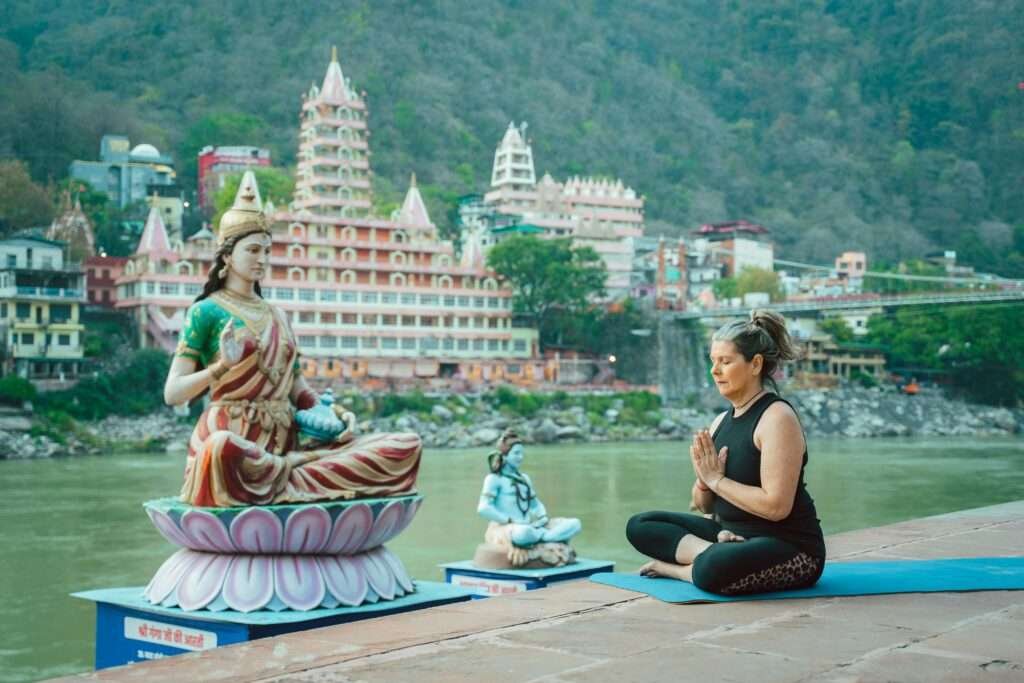
“Maa Ganga is worshipped as the river that cleanses the body, heals the soul, and connects humanity to the divine.”
History and Importance in The Story of Ganga River
The Ganga has been a symbol of divinity and culture since ancient times. In the Rigveda, she is praised as a life-giving goddess, while in the Ramayana and Mahabharata, the river appears as a pathway to purity and liberation. These sacred texts describe her not only as a river but as a divine force connecting earth and heaven.
Foreign travellers and historians also wrote about the Ganga River. Greek writers admired the vastness of the Ganga River, while Chinese pilgrims like Hiuen Tsang described its sacred role in Indian life. Persian historians highlighted her importance for trade, farming, and culture. Through their accounts, The Story of Ganga River reached the wider world, where she was seen not only as a holy stream but also as a civilizational lifeline.
Over centuries, the river has inspired poetry, music, and art. Poets composed verses calling her “Maa Ganga,” musicians dedicated devotional songs, and artists painted her descent through Lord Shiva’s matted locks, symbolising her divine entry into the world. Even today, the Ganga continues to inspire modern literature, films, and devotional art, proving that she is not just a river but a timeless cultural icon.
“Flowing through scriptures, stories, and songs, the Ganga remains a river of faith and inspiration across generations.”
Importance of the Ganga River in Daily Life
The Ganga River is more than a sacred stream. She is the backbone of daily life for millions in North India. In the story of the Ganga River, her waters appear as a lifeline, giving safe drinking water to towns and villages. The fertile soil of the Indo-Gangetic plain, enriched by her flow, supports one of the world’s largest agricultural belts. Crops like rice, wheat, sugarcane, and pulses depend directly on her waters. This makes the Ganga River a foundation of India’s food security and rural economy.
Beyond agriculture, the river also plays a vital role in transportation and connectivity. Boats and ferries along her course link small communities, enable trade and carry pilgrims across sacred towns. For those living by her banks, the Ganga is a lifeline of work and survival. Fishermen depend on her rich aquatic resources, boatmen earn their livelihood ferrying goods and people, and the thriving tourism industry around Haridwar, Varanasi, Prayagraj, and Kolkata is deeply tied to her ghats, temples, and festivals.
“Flowing through fields, homes, and hearts, the Ganga is the daily rhythm of life for millions.”
Environmental Challenges of the Ganga River
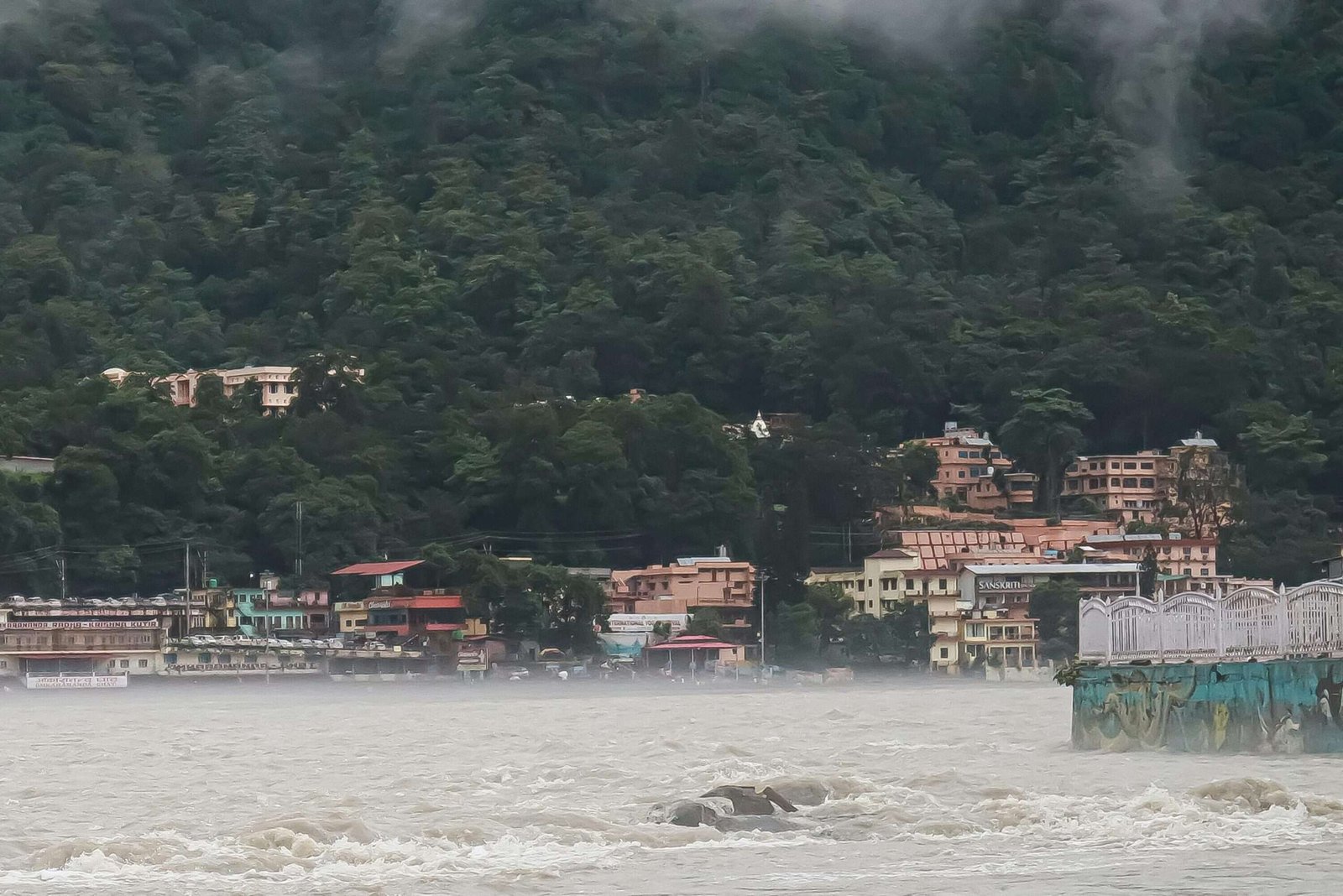
Though revered as a goddess, the Ganga River faces serious environmental challenges. In The Story of Ganga River, one of the biggest issues highlighted is pollution—untreated sewage, industrial waste, plastic, and ritual offerings regularly flow into the Ganga River, harming both people and nature.
Climate change is another growing threat. Melting glaciers in the Himalayas and erratic rainfall are reducing the river’s flow, affecting agriculture, drinking water, and the livelihoods of millions.
The Ganga River’s rich biodiversity is also at risk. In The Story of Ganga River, species like the Ganga river dolphin, freshwater fishes, and turtles are rapidly declining due to pollution and loss of habitat. Protecting the Ganga River is no longer just about faith—it is about safeguarding life, culture, and the future of generations.
Government Efforts to Clean the Ganga River
Recognising the Ganga’s importance and the threats she faces, both the government and society have taken major steps for her protection.
One of the biggest initiatives is the Namami Gange Project, launched by the Government of India. This flagship program focuses on cleaning the river by setting up sewage treatment plants, reducing industrial discharge, and promoting eco-friendly practices. It also aims to conserve biodiversity, rejuvenate tributaries, and restore the river’s natural flow.
Alongside government efforts, many NGOs and local communities are playing an active role. From organising river-cleaning drives and planting trees along the banks to educating people about pollution, these grassroots initiatives are creating real impact. In several towns, local groups regularly monitor water quality and encourage sustainable rituals, like offering flowers without plastic.
Awareness campaigns have also become a key tool in protecting the Ganga River. Programs in schools, media campaigns, and cultural events are teaching people—especially the younger generation—about the need to respect and preserve Maa Ganga. In The Story of Ganga River, eco-tourism projects and community-based tourism are highlighted as efforts that encourage people to see the Ganga River not just as a religious symbol but as a living ecosystem.
Together, these government programs, social initiatives, and public awareness drives show that protecting the Ganga is a shared responsibility. Only by combining faith with action can India ensure that this sacred river continues to flow clean and strong for future generations.
“When people and policies come together, Maa Ganga can once again flow as a pure and eternal source of life.”
Unique Features of the Ganga
The Ganga is unique not only for her spiritual value but also for her natural qualities. Scientists have discovered her rare self-purifying ability, caused by bacteriophages that destroy harmful bacteria, keeping her waters fresher than most rivers.
On a global scale, the Ganga-Brahmaputra delta, visible in NASA satellite images, is one of the world’s largest and most fertile deltas, supporting millions of people.
Beyond science, the Ganga is also believed to bring spiritual healing and mental peace. Sitting by her banks or taking a holy dip is seen as cleansing for both body and soul, making her a river of faith, life, and calm.
“The Ganga nurtures the land and heals the heart.”
Learn More :- Uttarakhand guide
Tourism and Travel along the Ganga River
The Ganga is not only a sacred river but also a major attraction for travellers. Cities like Rishikesh, Haridwar, Varanasi, Patna, and Kolkata draw millions of visitors every year. Each destination offers a mix of spirituality and culture—from the peaceful ghats of Haridwar to the vibrant rituals of Varanasi.
For adventure lovers, the river is equally exciting. River rafting in Rishikesh, boat rides in Varanasi and Patna, and witnessing the evening Ganga Aarti are experiences that leave a lasting impression. Tourists also enjoy exploring historic temples, colourful festivals, and the calm beauty of the riverbanks.
Thus, the Ganga offers something for everyone—spiritual seekers, cultural explorers, and adventure enthusiasts alike.
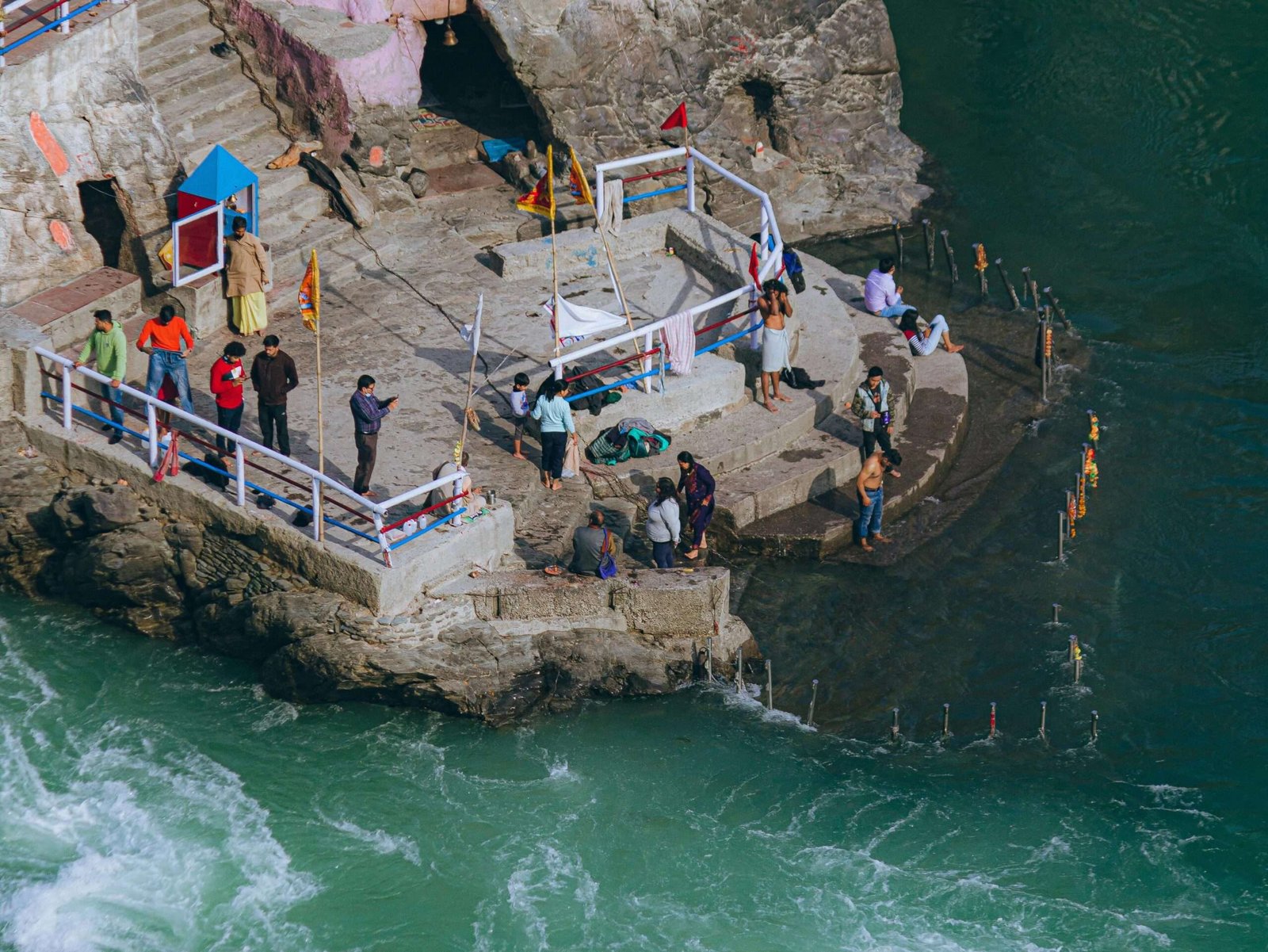
Conclusion
The Ganga is not just a river; she is Maa Ganga, the eternal lifeline of India. For centuries, her waters have given life, faith, and hope to millions, shaping our culture and traditions. But today, pollution and neglect put her at risk. Protecting her is protecting our future. Let us respect Maa Ganga so that she continues to flow as a river of life, purity, and devotion for generations to come.
FAQs About the Ganga River
Ans. The Ganga originates from the Gangotri Glacier in Uttarakhand, where the river is first called Bhagirathi. It officially becomes the Ganga after merging with the Alaknanda River at Devprayag.
Ans. People consider the Ganga holy because of its deep connection with Hindu mythology. Devotees worship her as Maa Ganga, believing she washes away sins and grants spiritual liberation (moksha). ✅ Millions take a holy dip in her waters during festivals and rituals.
Ans. Major cities on the Ganga’s banks include Haridwar, Varanasi, Prayagraj, Patna, and Kolkata, each renowned for its ghats, temples, and rich cultural heritage.
Ans. The Ganga flows for more than 2,500 kilometres, making it one of the longest rivers in India and a lifeline for millions of people.
Ans. The Ganga is being cleaned mainly under the Namami Gange Programme launched by the Government of India. Sewage treatment plants, river-surface cleaning, and strict pollution control for industries are key steps. Along with this, NGOs, volunteers, and local communities support the mission through awareness drives and cleanliness campaigns.